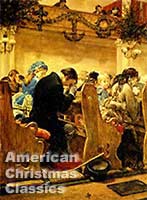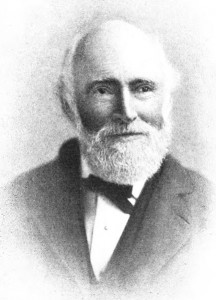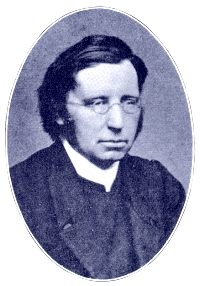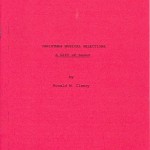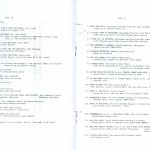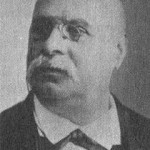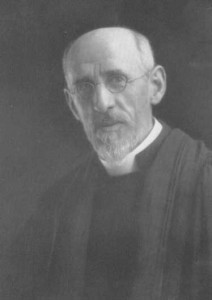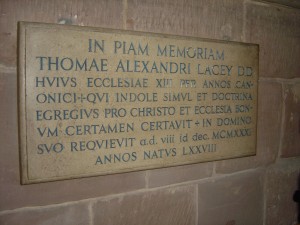Christmas Songs and Carols to Brighten the Holidays
Let us make this “a season to be jolly!” Despite our troubles, let us rekindle the fond memories of Christmas past for our parents, grandparents, and children. Let us touch the sentimental strings of carefree and youthful days that once consumed Baby Boomers and our military veterans.
Let us start with the idea of organizing some of our holiday festivities around the theme of singing carols and holiday songs. It doesn’t get better than hearing joyous Christmas songs while hauling in and trimming the Christmas tree.
Some familiar old-timers reminisce about the joy of Christmas songs and carols.
The late Andy Williams, a popular singer of the 1960s and 1970s, described celebrating the Christmas season in an interview with me several years ago. “It was such a great time,” Andy said, as he and his three older brothers used to go house to house singing carols and drinking eggnog in Wall Lake, Iowa.
“Those were the days when you knocked on a neighbor’s door and opened unlocked doors.” The talented singer who in later years starred at his Moon River Theater in Branson, Missouri, suggested it would be a nice thing to renew the tradition of caroling around the neighborhood, or one’s home town, “because it is such a wonderful thing to do.”
Della Reese, familiar to television viewers for her earthly role in the popular 1994-2003 program “Touched by an Angel,” wrote to me at the same time “I just love the way Christmas carols change the spirit and attitudes of us all.” An accomplished singer and ordained minister, in addition to her acting skills, she described “Silent Night” as a magnificent thought, and her favorite holiday tune as “Chestnuts Roasting on an Open Fire” sung by the mellifluous Nat “King” Cole. The irrepressible Della added, “In fact, I don’t really start my Christmas in earnest until I hear Nat sing “The Christmas Song.”
The late country and pop singer, Gene Pitney, enjoyed considerable success on both sides of the Atlantic through the mid-1960s with more than twenty Top 40 singles, including hits “Town Without Pity” and “Only Love Can Break a Heart.” In an e-mail Gene fondly recalled carving the turkey when his large family gathered for the holidays and the singing of Christmas carols. “I prefer religious carols,” he said, “that have not become jaded by commercial overuse. They represent the essential Christmas message.”
Take a cue from Andy, Della, and Gene. Start this holiday season with the idea of organizing your festivities around the theme of singing carols and holiday songs.
Celebrate with friends and family at home beside the fireplace or piano, or while trimming the Christmas tree, with traditional classics as “O Little Town of Bethlehem,” or “The Twelve Days of Christmas,” or singing such nostalgic holiday fare as “White Christmas,” “Have Yourself a Merry Little Christmas,” or “Rudolph the Red-Nosed Reindeer.”
Encourage friends to join in the singing of “Silent Night” and “We Wish You a Merry Christmas” in front of your neighbors’ city stoop or country home. Better yet, why not sing for our senior citizens at nursing home or an assisted care facilities, or at a food kitchen for the poor and homeless, or a military hospital for our aged veterans or wounded warriors? Rest assured your caroling there will be met with open hearts and ready smiles.
Or you might volunteer to take part in the local performance of Handel’s “Messiah” for other worthy causes, or support a local church by attending its vesper service where awe-inspiring Christmas motets and concertos may reverberate, and where the reverential carol-hymn “O Come, O Come, Emmanuel” soars to celestial heights on the wings of angels. This is truly music for the soul.
Though the custom of singing Christmas songs and carols in front of neighborhood homes may seem quaint and outdated, let us redouble our efforts, especially this year, to engage young and old alike in reviving a wonderful Christmas tradition that is never out of fashion.
Ron Clancy is a Christmas songs and carols historian, and the author of illustrated Christmas music gift collections at www.christmasclassics.com.
Christmas Eve 2013: Gratitude and Fisher House
Today is Christmas Eve, a much anticipated day on the Christian calendar that serves as a prelude to the birth of our savior Jesus Christ. For many of us it a day of evening worship at our parish church and a time to reflect on the meaningful story of Christmas so richly illuminated by the Gospel of St. Luke.
For me personally Christmas Eve floods me with childhood memories about going to midnight Mass and hearing a choir of nuns sing carols so beautifully that their notes seemed to spiral heavenward as though on the wings of angels. That warm and intoxicating experience has often been rekindled each Christmas Eve, especially today when I took time from doing last minute Christmas shopping to re-read several e-mails I recently received from Fisher House managers from across the country regarding the donations of Best-Loved Christmas Carols and American Christmas Classics, my two best-selling, highly illustrated Christmas music collections
Two of those e-mails were particularly poignant. Heather Frantz from the Fisher House of Pittsburgh wrote: I just wanted to let you know that we handed out your boxed collections to our guests this past Wednesday at our Christmas Party and they absolutely LOVED them!!!!!! We had several wives who were so touched by the gift that they teared up and they all opened them and couldn’t believe how amazing the book was and all of the stories and history behind the songs that they all love so much. Thank you so very much for providing such a joyous gift for our guests!!! Merry Christmas to you!
The second response came from Kristin Palmer, Fisher House of San Diego. I just wanted to follow up with you and let you know we received and have been distributing your Christmas collections to our families. I can tell you personally each family I have talked to is touched and awed by your generosity. The holiday season on a good day can be stressful enough, but to have to also deal with a loved one in a medical crisis compounds that stress. I gave the CDs to a mother whose 18 year old Marine is receiving cancer treatments. She was very moved, and thankful. Fortunately in her case she will be able to bring her son home for the holidays, and she said they would be listening to them and letting everyone they know about the generosity of the Fisher House and those that support it. For the rest of the families that will have to remain here for the holidays, at least they will have a little Christmas spirit and know someone was thinking of them during the holidays. Again, thank you and God bless!
The sentiments conveyed by Fisher House military families are similar to the feelings I had when the Knights of Columbus, SKF Industries, Villanova University students, and others annually feted us at St. John’s Orphanage in Philadelphia during the Christmas holidays. I fondly remember, along with hundreds of other orphan boys, the warm afterglow of being a starry-eyed recipient of carefully wrapped Christmas presents that were more precious than gold.
To hear that the joy of my Christmas days of yore has been replicated and found expression in the hearts of Fisher House military families truly humbles me. As it should for one who has benefited much from the Christmas spirit.
Merry Christmas!
Christmas Classics PERSON OF THE DAY: William Chatterton Dix
On this day in 1898, William Chatterton Dix died in Cheddar, Somerset, England. He was bequeathed the middle name of Chatterton in honor of Thomas Chatterton, a poet whose biography was penned by Dix’s father. For a better part of his professional life Dix was a marine insurance agency manager, yet he is best known as the Christmas carol composer of the English carols What Child Is This? and As with Gladness Men of Old.
The insurance executive always nurtured a great love for poetry and hymns. His interest in both was accentuated at the age of twenty-nine when a near fatal illness and severe depression confined him to bed for months. It was also during this period when Dix wrote most of the forty hymns credited to him, including his most popular carol What Child Is This?
The lyrics for What Child Is This? were initially part of a six-stanza poem titled The Manger Throne. Dix later took three of the poem’s stanzas and adapted them to the popular 16th-century tune of Greensleeves. In 1871 both text and tune, the latter arranged by John Stainer, were published in Bramley & Stainer’s Christmas Carols, New and Old, a widely circulated compilation.
The beautiful folk melody of Greensleeves dates from Elizabethan times, perhaps even earlier, and reputedly it had less respectable lyrics sung to it in several lyrical settings. One of the earliest references to it was in 1580, and it was twice mentioned in Shakespeare’s comedy play, The Merry Wives of Windsor. In the 1642 New Christmas Carols black-letter edition, a variant tune of Greensleeves was used in the carol The Old Year Now Away Is Fled. Strains of the melody were also heard in John Gay’s 1728 satirical ballad opera, The Beggar’s Opera.
The providence of history is such that Greensleeves might be much lesser known if not for a strange illness that befell William Chatterton Dix. His effort to string religious pearls from his lengthy The Manger Throne, and the sometimes less respectable Greensleeves tune, ultimately prove successful with the issuance of What Child Is This? Since its 1871 publication, the beloved carol has been sustained by repeated publication and acclaim for its reverential treatment of the Nativity theme.
Christmas Classics PERSON OF THE DAY: John Sullivan Dwight
On this date in 1893, John Sullivan Dwight died in Boston. He was one of the more compelling figures from Harvard University who were Christmas carol composers or translators. They included among others, Edmund Hamilton Sears (It Came upon the Midnight Clear), Henry Wadsworth Longfellow (I Heard the Bells on Christmas Day), and Rev. Phillips Brooks (O Little Town of Bethlehem). Dwight’s contribution was providing the English translation for O Holy Night after the French carol Cantique de Noël.
After graduating from Harvard Divinity School, John Sullivan Dwight served as a Unitarian minister in Northampton, Massachusetts. But his stay there was short-lived. He had to leave the ministry because he became deathly ill when he had to deliver sermons to his congregation. After leaving the ministry he became a recluse and then sojourned to the socialistic Brook Farm community, of which he was one of its founders. For five years there he lived a transcendental life teaching classical languages and music. Life on the commune also meant time for farming, cutting wood, cultivating trees, and other chores.
Eventually he returned to Boston and devoted himself to literature where he became America’s first influential classical music critic writing for Dwight’s Journal of Music. For several years it was the only musical journal in the country.
Dwight also cultivated an interest in European carol tunes, particularly the French carol Cantique de Noël (a.k.a. Minuit Chrétiens). A carol with an intriguing history, it became much disliked by French church authorities even though it had originally been well received by them and the church faithful. This turnabout led to criticism about the carol’s perceived lack of musical taste and because it did not possess the “spirit of religion.” But the repudiation of the carol may have been due to Placide Cappeau, the carol lyricist, and his socialist leanings and later renunciation of Christianity; not to mention the fact that Adolphe Adam, the composer of the carol melody, was Jewish.
Thirteen years after Dwight’s death the carol had the distinction of being the first ever heard on the radio. On Christmas Eve in 1906 ships at sea heard O Holy Night being played on a violin.
- John Sullivan Dwight
Christmas Classics PERSON OF THE DAY: William Hayman Cummings
In August 1831 William Hayman Cummings was born in Sidbury, England. He was a musician, notable tenor, and organist who may be best known for his wedding of Felix Mendelssohn’s music to the Charles Wesley hymn Hark! The Herald Angels Sing. An accomplished musician, Cummings was educated at St. Paul’s Cathedral Choir School and the City of London School. He was also the founder of the Purcell Society, a reputable singing professor at the Royal Academy of Music and later a principal for the Guildhall School of Music.
Wesley, who co-founded the Methodist Church, originally titled his hymn as Hark! How All the Welkin Rings in the 1739 publication Hymns and Sacred Poems. The carol melody was adapted from a cantata that Mendelssohn wrote as part of his commission to compose music for the 1840 Leipzig Gutenberg Festival. That festival commemorated the 400th anniversary of the invention of the printing press by Johann Gutenberg. Six years later the teenage Cummings was a chorister for Mendelssohn’s first London performance of Elijah, the second of three oratorios composed by the German master.
Perhaps during that performance Cummings developed an admiration for Mendelssohn’s music and then in 1855 decided to link Mendelssohn’s music with Charles Wesley’s hymn. Thus on Christmas Day of that year, Hark! The Herald Angels Sing was first sung at Waltham Abbey with William Hayman Cummings at the organ.
Christmas Classics PERSON OF THE DAY: Rev. John Mason Neale
On this day in 1866, the Rev. John Mason Neale died. A humble and scholarly Anglican priest, his reputation largely rests with his research and translations of ancient Greek and Latin religious texts, tasks that must have come easily to him since he was proficient in twenty-one different languages. The contributions of Neale to the revitalization of ancient and medieval church hymns and his deft translations of them cannot be underestimated. The brilliant scholar was known to have lamented the Reformation’s neglect of the rich history of hymnody, despite the movement’s praiseworthy restoration of worship and song to the language of the common people.
The Rev. Neale was also a well-respected composer of Christmas carols and hymns, some of which were delivered as a result of translating centuries-old hymns and songs, including those of a secular strain.
Three of those carols have grown quite popular since the publication of his 1853 collection Neale’s Carols for Christmastide. The most sacred was the carol hymn Veni, Emmanuel (O Come, O Come Emmanuel) based upon the Latin great O Antiphons of Advent whose seven verses are believed to have been composed by monastery monks who sang one verse per day at Vespers, the late afternoon or early evening canonical hour of prayer, for seven straight days prior to Christmas Eve.
Good Christian Men, Rejoice, the second carol, was Neale’s loose English translation of one of Germany’s best-loved carols, In Dulci Jubilo. Neale found the melody of this medieval Latin-German carol in Piae Cantiones, the famous 1582 Swedish book of carols that also produced the tune for Good King Wenceslas, the third familiar carol. For the latter, Neale was looking for a good role model for children. He found it in King Wenceslas of Bohemia who was known to be a just and merciful king and having considerable compassion for the poor and sick.
It could be said that King Wenceslas was also a role model for Neale himself since he, too, led an exemplary life by dedicating his life to the less fortunate. The hymn composer had a penchant for caring for the lowliest on society’s scale, and his Christian deeds set him apart from other clerics holding more lofty positions in the Anglican Church.
Such was Neale’s station in life that his own bishop, imagining Neale of Roman Catholic leanings, prohibited him from performing any ministerial duties and relegated him to a seemingly less desirable post. Thus, in 1846 Neale was made warden of Sackville College, a position he held for the rest of his life. Sackville College, however, was actually an almshouse, a charitable residence for the poor and aged. Twelve years later the humbly intrepid, and often frail and sickly, Neale founded the Sisterhood of St. Margaret, a group dedicated to the poor, needy, and suffering. For this charitable effort he was accused of a return to nuns, again earning him the enmity of Church authorities that thought he was converting to the Roman Catholic faith. Neale’s ministry later established an orphanage, a school for girls, and a home for unwed mothers, the latter forced to close due to church and local opposition. In a nutshell, Neale’s dedication to serving the poor and indigent was on a level with that of his work with sacred texts and hymns. Each pursuit was performed tirelessly, with dignity, and for the higher good.
Emmanuel, meaning “God with us,” is a splendid title for a carol hymn. It must have held special significance to Rev. Neale as he worked among the poor. The title reaffirms the religious concept of Christ’s birth as God Incarnate dwelling among men and announcing to them his mission here on earth. In the world of the ancient Hebrew, the choice of name was made judiciously, as the name Emmanuel must have been for Neale. For the scholarly Anglican priest, the name radiated in bold light and demonstrated, coincidentally, his own essential character and purpose as a man.
Today the Rev. Neale lays in peace at St. Swithun churchyard in East Grinstead, England, close to Sackville College where he abundantly served so well those who had so little.
Christmas 1988 Starts Me on the Yellow Brick Road
In 1988 I thought it would be a neat idea to share the riches of my Christmas music collection. So for Christmas I gift-wrapped four audio cassettes of the finest recordings from my collection and gave them to family and friends. Each gift collection was accompanied by an 8-page type-written directory with a Chinese red cover titled “A Gift of Sound.” Besides having a decorative, though primitive look, the directory of song titles was intended to be easier on the eyes than my barely legible long-hand. Just imagine writing the same information on cassette index cards four times twelve, or forty-eight total! The thought was enough to give me writer’s cramps. My quaint IBM Selectric II typewriter, however, saved me the trouble and as a result the directory included not only selection titles, but also brief liner notes that sometimes indicated the origin of each carol, holiday song, or instrumental piece.
Some of my friends included those of the Jewish faith married to Christian partners. They admitted that although they usually felt left out at Christmas, they were indeed appreciative of my eclectic Christmas music gift. What made the collection special for most was the quality of the music. Quite unlike what they were accustomed to hearing during the holidays, it encompassed Gregorian chant, once the Christmas music of its day, and such classical pieces as "Anima Nostra,” Bach’s “Christmas Oratorio,” the German motet ""Hort zu lieben Leute," and the Spanish villancico, "Riu, Riu, Chiu” just to name a few. The collection was rounded out by lyrical English carols from the 16th and 17th centuries, and better known traditional fare, particularly carol hymns as "O Come, O Come Emmanuel” and “Adeste Fidelis,” or classic holiday songs as “White Christmas,” and “The Christmas Song.” In all, the four cassette collection totaled one hundred and twenty-four titles. Most came from England, France, Germany, and the United States. Entries from Austria, Czechoslovakia, Poland, Italy, and Sweden were also part of the mix. By the end of the 1988 Christmas season I was being encouraged by several friends to do something about my great interest in Christmas music, suggesting that I should pursue my interest and take advantage of my college degree. This I did. And in 1989 I was on my way.
SPECIAL PERSON OF THE DAY – Émile Waldteufel (December 9, 1837 – February 12, 1915)
The composer of Les Patineurs, Op. 183, Émile Waldteufel died in Paris and is buried at Cimetière du Père Lachaise there. The composer was born in Strasbourg, France to a Jewish Alsatian family of musicians. In 1882 he composed the best-known waltz of his career – Les Patineurs (a.k.a. "The Skaters’ Waltz" in English). Inspired by the Cercle des Patineurs, or "’Rink of Skaters’ at the Bois de Boulogne in Paris, the waltz has since been played in various venues, from concert halls to movies such as The Hollywood Revue of 1929 and Chariots of Fire, to music games like Gamecube’s “’Dance Dance Revolution Mario Mix” and Arc System Works’ “Princess on Ice.”
Waldteufel’s famous waltz evokes wonderful imagery: a poised skater gracefully gliding along the ice and swirling about a ring of other skaters as part of the wintry atmosphere. The delightful music includes the sound of bells that adds a nice touch to the outdoor scene. The noted conductor Arturo Toscanini led the NBC Symphony Orchestra on January 28, 1945, at Carnegie Hall, New York, in a fine RCA Victor recording of Les Patineurs
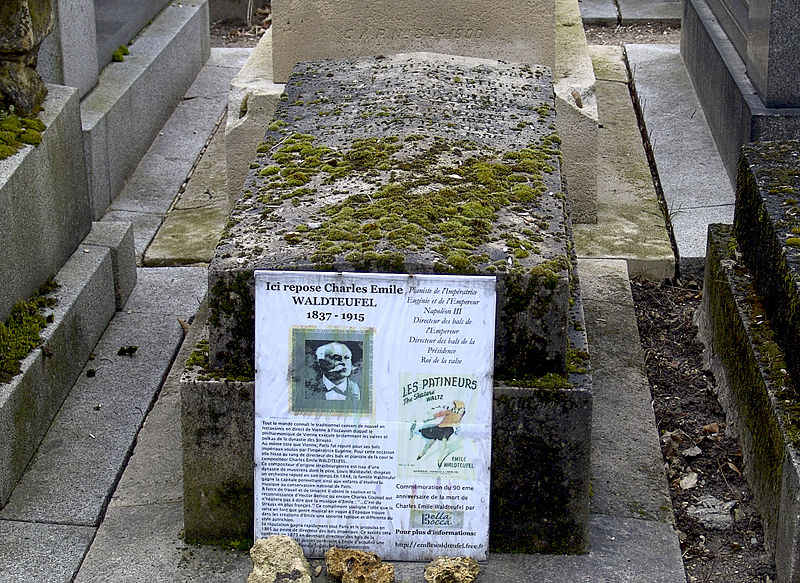
Grave of Émile Waldteufel
The Art of Collecting Christmas Music
Remember how record companies used to entice would-be customers to join their record clubs? You know, the mail-order offers of four or six or eight vinyl albums for only $.99 a pop as long as you purchased a minimum number of their selections-of-the-month or other albums of equal value? Columbia Record Club, which began the practice of marketing and distributing vinyl records in the late 1950s, led the way. RCA Record Club, a well as its Red Seal classical music label, and other record companies eventually followed suit.
Thirty years after hearing the sweet singing of carols by the Sisters of St. Joseph at my first Midnight Mass, I was in the process of assembling a small library of Christmas music. At the time I owned a medium-sized collection of pop and classical music, the latter for which I had acquired a taste during my teenage years, and my appreciation of Christmas music was definitely on the rise. To expand the library, I readily took advantage of Columbia and RCA marketing offers by enrolling in their record clubs. To maximize receiving benefits from each club, I would quickly fulfill my membership obligation by purchasing the minimum number of albums, and once I did, I would immediately cancel my membership. Since I was a member in good standing when I left, it wasn’t long before the same record clubs sent me new offers to join their clubs again. I almost always accepted, and the membership in-and-out cycle would repeat itself, thus enabling me to add significantly to my music library at a very reasonable cost.
But the record club that had the most impact on my assembling a substantial Christmas music library was The Musical Heritage Society of New Jersey. Like RCA’s Red Seal label, it too emphasized classical music as its reason d’être, and its annual Christmas catalog offerings, more generous and comprehensive in scope than the better known clubs, opened my eyes to the wonders of Renaissance, Baroque, and sacred music. What made these pre-CD era purchases possible were the amazing low prices, ranging from $2.50 and $5.45 per album or cassette.
My most memorable purchases, mostly from the Musical Heritage Society, included Michael Praetorius’ Christmas motets on period instruments, Italian Baroque Christmas concertos, colonial American hymns and carols, 15th-to-18th century English carols, especially those that were part of Benjamin Britton’s “A Ceremony of Carols,” and cantatas and oratorios by Back, Handel, and Mendelssohn. Adding to my delight were numerous albums of carols performed on a variety of instruments: organ, brass, harpsichord, panpipes, flute, carillon bells, harp, guitar, and music boxes. Other prized Christmas albums included performances by illustrious choirs and orchestras: the Choir of King’s College, Cambridge, the Vienna Boys Choir, and the Mormon Tabernacle Choir with the Philadelphia Orchestra, just to name a few.
By 1988 as a result of my systematic low-cost approach in taking advantage of various record club promotions, I had become the proud owner of a substantial Christmas music library. Later that year as I was feasting on my second helping of Thanksgiving turkey, a light bulb went on: Why not share my acquired riches with family and friends for Christmas!
SPECIAL PERSON OF THE DAY: Thomas Alexander Lacey (December 20, 1853 – December 6, 1931)
Rev. Thomas Alexander Lacey
Canon Lacey memorial at Worcester Cathedral
Buried in Garth cloister at Worcester Cathedral, England, are the remains of the Rev. Thomas Alexander Lacey, an Anglican priest, who died on December 6, 1931. His special contribution to the carol hymn repertoire was providing the most popular English translation O Come, O Come Emmanuel for “Veni, Emmanuel.” His translation of the Latin verses, which were based upon the great O Antiphons for the week prior to Christmas and are included in my first publication Best-Loved Christmas Carols (2000), first appeared in The English Hymnal (1906), a labor of love he had work on for many days and nights.
A great conversationalist and scholar noted of his expertise in Medieval Latin and Canon, Rev. Lacey lived the Christian ideal very much like John Mason Neale, another Anglican priest and the composer responsible for the adaptation of the Latin lyrics for Veni, Emmanuel. Both priests drew suspicion from their Anglican superiors because of their Catholic leanings, and in particular the Rev. Lacey was an apologist for the Anglo-Catholic position and devoted to the cause of ecclesiastical reunion. Both priests also worked among the less privileged or the afflicted. Lacey was a dedicated worker on behalf of girls in penitentiaries, and he once worked tirelessly during a typhus outbreak that occurred when he served at St. Benedict’s in Ardwick by persuading those infected and reluctant to leave their homes to allow him to carry them into ambulances.
Rev. Lacey eventually became assistant master of Denstone College and was made a Fellow of the College of St. Mary and St. John, Lichfield. That was followed by his appointment as vicar of St. Edmund, Northampton, then vicar of Madingley, Cambridge, and later as chaplain and then warden at the House of Mercy in Highgate, where there is ample testimony he had led a saintly life. In 1919 he was made Canon at Worcester in which capacity he served until his death.
